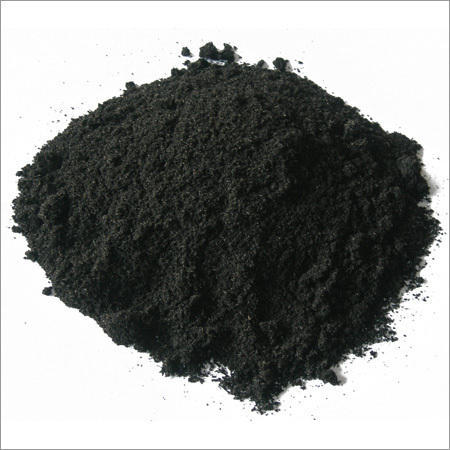The Comprehensive Guide to Polymer-Modified Asphalt
Road infrastructure is the backbone of modern societies, connecting communities and facilitating economic activities. To meet the growing demands placed on our roadways, engineers and researchers are constantly seeking innovative solutions. One such breakthrough in road construction technology is polymer-modified asphalt, a material that combines traditional asphalt with polymer additives to create a high-performance and sustainable paving solution.
Polymer-Modified Asphalt Composition:
Polymer-modified asphalt is produced by blending asphalt with polymer additives during the mixing process. These polymers can be sourced from various materials, including recycled rubber or synthetic polymers like styrene-butadiene-styrene (SBS), styrene-butadiene rubber (SBR), or ethylene-vinyl acetate (EVA). The combination of asphalt and polymers results in a modified binder that exhibits superior performance characteristics compared to conventional asphalt.
Key Advantages of Polymer-Modified Asphalt:
- Enhanced Durability and Flexibility: The incorporation of polymers improves the elasticity and flexibility of the asphalt. This enhanced flexibility allows the pavement to better accommodate stresses from heavy traffic loads, temperature fluctuations, and dynamic forces, ultimately increasing the material’s resistance to cracking and fatigue.
- Resistance to Aging and Cracking: Aging and cracking are common challenges faced by traditional asphalt pavements. Polymer-modified asphalt resists the effects of oxidation and aging, maintaining its structural integrity over a more extended period. The improved resistance to cracking is especially valuable in regions with extreme weather conditions.
- Rutting Resistance: Rutting, the gradual deformation of the road surface due to repetitive traffic loads, is mitigated by the use of polymer-modified asphalt. The modified binder’s increased resistance to permanent deformation ensures that the road maintains a smooth and even surface, even under the most demanding traffic conditions.
- Adhesion and Cohesion Properties: Polymer additives improve the adhesion between asphalt layers and enhance the cohesion within the asphalt mixture. This results in a more robust bonding between layers, reducing the risk of delamination and enhancing the overall stability and strength of the road structure.
- Environmental Benefits: The incorporation of recycled polymers in asphalt aligns with sustainability goals by reducing the demand for new raw materials. Additionally, the extended lifespan of polymer-modified asphalt contributes to environmental conservation by reducing the need for frequent road maintenance, leading to lower energy consumption and a diminished environmental footprint.
- Temperature Sensitivity: Polymer-modified asphalt exhibits improved performance over a broad temperature range. It remains flexible at low temperatures, preventing cracking, while maintaining stability and strength at higher temperatures, reducing the risk of rutting.
The production of polymer-modified asphalt involves blending traditional asphalt with polymer additives to enhance the properties of the final material. The process typically includes the following key steps:
- Selection of Polymers: The first step is choosing the type of polymer to be used. Polymers can be derived from various sources, including recycled materials or synthetic polymers such as styrene-butadiene-styrene (SBS), styrene-butadiene rubber (SBR), ethylene-vinyl acetate (EVA), or others. The selection of the polymer depends on the desired characteristics of the final modified asphalt.
- Preparation of Asphalt Binder: The base asphalt binder is heated to a specified temperature to make it more fluid and workable. This temperature can vary depending on the specific type of asphalt being used.
- Polymer Addition: Once the asphalt binder is prepared, the selected polymer is introduced into the mix. The addition of the polymer can be done in various ways, such as through direct incorporation, melt blending, or solution blending. The goal is to achieve a homogeneous mixture of asphalt and polymer.
- Mixing and Homogenization: The asphalt binder and polymer are thoroughly mixed to ensure a uniform distribution of the polymer within the asphalt matrix. This mixing process can occur in dedicated polymer-modification plants or through the use of specialized equipment within asphalt production facilities.
- Quality Control and Testing: Throughout the production process, quality control measures are implemented to ensure that the modified asphalt meets specified performance criteria. Various tests, including viscosity, penetration, elastic recovery, and rheological tests, are conducted to assess the properties of the modified asphalt.
- Cooling and Storage: After the polymer modification is complete, the modified asphalt is allowed to cool to a temperature suitable for storage and transportation. It is essential to control the cooling process to maintain the desired properties of the modified binder.
- Transportation and Application: Once the polymer-modified asphalt has been produced and tested, it is transported to the construction site for application. The modified asphalt can be used in various asphalt mixtures, such as hot mix asphalt (HMA) or warm mix asphalt (WMA), depending on project requirements and specifications.
- Pavement Construction: Polymer-modified asphalt is applied during the pavement construction process. It is laid and compacted to create a durable and resilient road surface. The enhanced properties of the modified asphalt contribute to improved performance, longevity, and resistance to various environmental factors.
- Post-Construction Monitoring: After the pavement is constructed, ongoing monitoring and evaluation ensure that the polymer-modified asphalt performs as expected. This may include periodic testing of the road surface to assess its condition, durability, and resistance to aging and cracking.
By following these steps, the production of polymer-modified asphalt results in a high-performance material that offers significant advantages over traditional asphalt in terms of durability, flexibility, and resistance to various stresses.
Conclusion:
Polymer-modified asphalt stands at the forefront of innovative solutions for road construction, offering a comprehensive set of advantages that address the challenges posed by increasing traffic demands, harsh environmental conditions, and the need for sustainable infrastructure. As the construction industry continues to evolve, the adoption of polymer-modified asphalt is poised to become increasingly prevalent, revolutionizing the way we build and maintain our roadways. With its enhanced durability, resistance to aging, improved rutting resistance, and environmental benefits, polymer-modified asphalt represents a significant step toward creating resilient and sustainable road infrastructure for the future.

